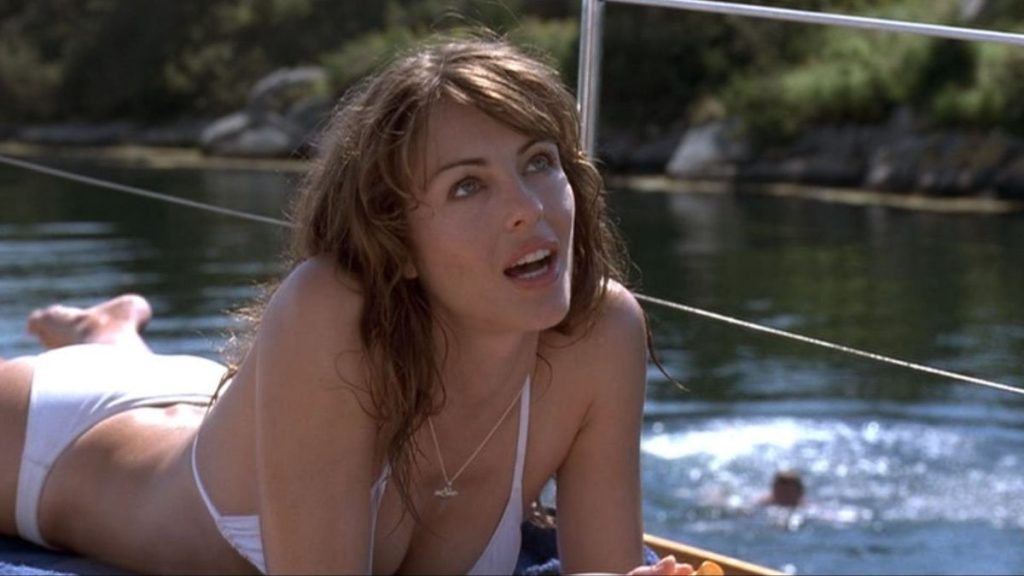Read also:
How to Watch FX Live Without CableHow To Watch AMC Without CableHow to Watch ABC Without CableHow to Watch Paramount Network Without CableEvery month, we at The Spool select a filmmaker to explore in greater depth — their themes, their deeper concerns, how their works chart the history of cinema, and the filmmaker’s own biography. In November we’re celebrating Kathryn Bigelow, the first female winner of a Best Director Academy Award, and her fascinating journey from indie genre films to blockbuster political dramas. Read the rest of our coverage here.
“Though they sink through the sea they shall rise again”
Dylan Thomas, and death shall have no dominion
Kathryn Bigelow kept her audiences wet for the greater part of the 1990s and early 2000s. Point Break (1991), The Weight of Water (2000), and K-19: Widowmaker (2002) form an unofficial Water Trilogy in which Bigelow explores Water as a symbol, motif, and space. But only with The Weight of Water does she fully dive in and push herself to her most liquid and lyrical depths.
From early on in Point Break, it’s clear the water is a permeable but deadly boundary where you “lose yourself and find yourself,” as Swayze’s character Bodhi says. The water, like Utah’s assignment, must be approached gently, for each is chaotic, but the water even more so. And like the water, Bodhi’s identity has its calm “spiritual side” with a dark and churning undertow. Bigelow uses water in Point Break to symbolize the fluxing duality of nature as a whole then smartly moves in to have it symbolize Bodhi’s dual-identity specifically as we find out more about him. She will swim further out, troubling the concept of identity and so much more, with The Weight of Water.
This 2000 adaptation of Anita Shreve’s 1997 novel of the same name follows Jean James (Catherine McCormack) as she and her poet husband, Thomas (Sean Penn), join her handsome brother-in-law Rich (Josh Lucas) and his alluring new girlfriend, Adaline Gunne (Elizabeth Hurley), for a weekend sail off the coast of New Hampshire. Jean is out there to photograph the site of The 1873 Smuttynose Island murders in which two immigrant women were bludgeoned to death by an axe and a man was tried and hanged for the crime under uncertain circumstances. But once Jean is on board and the crew is out to sea, history, identities, and motives begin to pitch and surge.

In The Weight of Water, time is in full flux. Told through a series of flashbacks (and flashbacks within flashbacks) Bigelow presents the “true” events of the murders as Jean pieces them together. We begin at the trial, where questionably-accused Louis Wagner (Ciarán Hinds) begs for his life, only to be fingered on the stand by the lone survivor of the attacks, Maren Hontvedt (Sarah Polley). As Jean uncovers more evidence about the murders, we find out more about the untimely deaths of Maren’s sister Karen (Katrin Cartlidge) and sister-in-law Anethe (Vinessa Shaw) and all the secrets that wound their way through their isolated homestead.
It’s an exciting premise that really gets to show off Bigelow’s sense of domestic and erotic drama, which we have rarely glimpsed in her oeuvre thus far. Every-body on the boat is hot, perhaps none more so than Hurley, who was at the height of her (Austin) powers at the time, and should have received an OBE for services to drama and human sexuality. Her raw magnetism and intelligence tests every bond onboard, her flirtation and topless poetry reading sending all the couples into rough uncharted waters. And Bigelow is able to use the confined space below decks to masterfully bring these emotional storms to a slow and sensual boil.
The inclusion of a historical true crime also gives Bigelow a chance to show off her eye for detail. Working with production designer Mark Laing, Bigelow recreates a past that feels worn, cramped, and lived in while still making room for Bigelow’s trademark tracking shots. These sequences in the past feel prescient, anticipating crisp contemporary historical crime thrillers like Alias Grace (2017) and The Lighthouse (2019) in the way they choreograph their drama and violence around intricate set-pieces.
From the very beginning, Bigelow projects images onto waves accompanied by David Hirschfelder’s brilliant smooth jazz score, which guides us through Jean’s ever-winding stream of consciousness. The score is rich in viscous textures that take the shape of whatever scene it’s in, never diluting them. It’s got a very “Y2K designer perfume commercial” sound, and it works beautifully. But it’s Bigelow’s use of water that is most interesting to pay attention to as one watches The Weight of Water.
Throughout The Weight of Water, we are treated to images of water that directly parallel the emotional turbulence onboard, starting out somewhat smooth with a gentle wake and ending in choppy and murderous waves. Water not only reflects the tempestuous events on the ship and in the past, but it is also the means by which we time travel. For Jean, the water is Time. It carries memories and the truth in its tides. As it splashes her, she can feel how Maren Hontvedt felt, and see what she saw.
Alice Arlen and Christopher Kyle’s script draws obvious but not well-articulated parallels between Jean and Maren. Both are reticent people who feel isolated and stretched thin. Both are trapped in marriages growing more and more silent in order to preserve the bond. They think “the best cure for melancholy is industry,” because it distracts and doesn’t disturb.
These are pretty commonplace cinematic tropes in which the researcher too closely identifies with their subject, so we as an audience can use our previous film knowledge to fill in the gaps. The central flaw of this film is that the connections between past and present are perhaps too fluid and murky to make clear sense of. Flux and inter-permeability are major themes in the script and one of the perils of such a script is setting out with no anchor. In this case, it would have been nice to have a clearer sense of how or why Jean is so affected by the water and Smuttynose Island.
Nonetheless, Bigelow is able to bring an exciting unspoken visual fluidity by casting actors who look uncannily similar. Hurley and McCormack are dead ringers for one another with their amazing brunette hair, pointed noses, and British accents. (I’d like to add they both also resemble Bigelow herself, but I haven’t the psychology training to unpack that.) Polley and Shaw, in their blonde, oval-faced, meek, and mild Norwegian posture, also resemble one another. This confuses identities just enough that it adds volume to the relationship dramas at play. One person could all too easily be replaced with another.

This fluidity of time and identity in The Weight of Water naturally crashes into the shoals of sexuality. We run aground on consensual and non-consensual sex. It affirms closeness and distance between couples. We also wade through adulterous, same-sex, and incestuous desires. Sex, like all things in this film, is anything but safe. Like water, it’s a navigable but potentially deadly territory.
While murky at times, Weight of Water is an interesting experiment in motif-making. Bigelow takes ideas and themes suggested in Point Break and fills them out into a full thesis with this film. She will reaffirm these points even further in K-19: The Widowmaker with its confined below-deck drama and nautical historical setting. As K-19 shows, for Kathryn Bigelow, water remains an upside-down space full of memories and horrors, where history and identities are forever in flux.